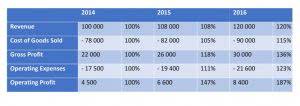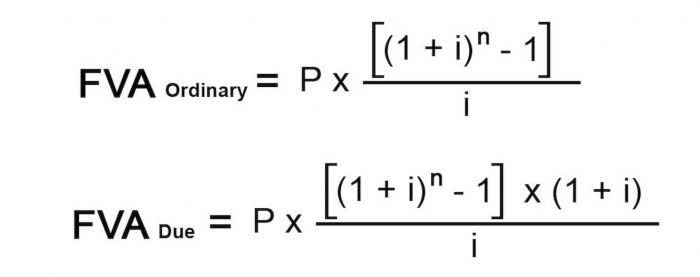How to Calculate Gross Profit Margin

Then, divide this figure by net sales to calculate the gross profit margin as a percentage. New businesses will usually have a smaller gross profit margin as they establish their practices and build their customer base. This doesn’t mean the business is doing poorly—it’s simply an indicator that they’re developing their systems. It’s important to note that gross profit margins are very different for different industries.

Gross margin is a strong indicator of profitability
You can increase sales and spend less on marketing to find new clients. Note that seasonal fluctuations in demand can impact your gross profit. During peak selling season, increased sales volume can boost margins, while off-seasons require strategic planning to maintain profitability. Gross margin analysis can inform your strategic decisions, such as entering new markets, launching new products, or adjusting your sales tactics.
Earnings Per Share
GM had a low margin and wasn’t making much money one each car they were producing, but GM was profitable. In other words, GM was making more money financing cars like a bank than they were producing cars like a manufacturer. Investors want to contribution margin income statement know how healthy the core business activities are to gauge the quality of the company. The concept of GP is particularly important to cost accountants and management because it allows them to create budgets and forecast future activities.

How confident are you in your long term financial plan?

A company may have high operational or marketing expenses that can offset the benefits of a robust gross margin. But, as a general rule of thumb, a thriving gross margin is a positive indicator of a company’s financial vigor. Since the cost of producing goods is an inevitable expense, some investors view gross margin as a measure of a company’s overall ability to generate profit. Gross margin differs from other metrics like net profit margin because it exclusively considers the costs directly tied to production. The price-earnings, or P/E ratio, is calculated by taking market value per share divided by earnings per share.
Assess the trends over time
Let’s say you want to figure out the gross profit margin of a fictional firm called Greenwich Golf Supply. You can find its income statement at the bottom of this page in table GGS-1. For this exercise, assume the average golf supply company has a gross margin of 30%. A company that sustains higher gross profit margins than its peers almost always has better processes and more sound operations.
- When you dig deeper into the firm’s annual numbers in its 10-K filing, you see that this is due, at least in part, to its ability to get much higher sales per square foot than other jewelry stores.
- Gross profit is the total profit a company makes after deducting its costs, calculated as total sales or revenue minus the cost of goods sold (COGS), and expressed as a dollar value.
- In the quest for financial mastery, businesses must look beyond their own boundaries.
- It looks at a company’s gross profit compared to its revenue or sales and is expressed as a percentage.
- Gross profit margins vary significantly across industries, so you can assess a good gross margin by looking at the normal range for small companies in your industry.
Gross profit is determined by subtracting the cost of goods sold from revenue. It can then use the revenue to pay other costs or satisfy debt obligations. Improving gross margin can be done by increasing sales price, reducing costs of goods sold, and improving product or service design. This means they retained $0.75 in gross profit per dollar of revenue, for a gross margin of 75%. In the quest for financial mastery, businesses must look beyond their own boundaries. A comparative analysis, pitting a company’s gross margin trends against those of competitors or the industry at large, can offer a panoramic view of its market standing.
It’s a simple profitability evaluation
- The contribution margin subtracts the variable costs for producing a single product from revenue.
- To interpret this ratio, you can conduct a long-term analysis of the company’s gross margin trends over time or draw comparisons between peers and the sector average.
- Companies and investors can determine whether the operating costs and overhead are in check and whether enough profit is generated from sales.
- This shows the company is improving its profitability and efficiency, retaining more money per each dollar of revenue generated.
- A company may have high operational or marketing expenses that can offset the benefits of a robust gross margin.
- The gross margin shows how well a company generates revenue from direct costs such as direct labor and direct materials costs.
Gross profit can be calculated by subtracting the cost of goods sold from a company’s revenue. It sheds light on how much money a company earns after factoring in production and sales costs. Gross margin and gross profit are among the metrics that companies can use to measure their profitability. Both of these figures can be found on corporate financial statements and specifically on a company’s income statement.
Increase your revenue per transaction
Increase Efficiency

-
Posts recentes
- Multiple Diamond Video slot by the IGT rocky 80 free spins Enjoy On line 100percent free
- Happy Larry’s Lobstermania step three Position opinion from mecca bingo casino IGT
- Gambling enterprise Greeting 3$ deposit casino Incentive 2024 Finest Greeting Extra Gambling enterprise
- Greatest Real cash Slot Applications casino frank free spins 2024 Top Video slot Apps inside United states
- Happy Larry’s Lobstermania step three Electronic poker and life of riches uk much more
Comentários
Arquivos
- setembro 2024
- agosto 2024
- julho 2024
- junho 2024
- maio 2024
- abril 2024
- fevereiro 2024
- janeiro 2024
- dezembro 2023
- outubro 2023
- setembro 2023
- agosto 2023
- julho 2023
- junho 2023
- abril 2023
- fevereiro 2023
- janeiro 2023
- junho 2022
- maio 2022
- abril 2022
- janeiro 2022
- setembro 2021
- agosto 2021
- julho 2021
- junho 2021
- janeiro 2021
- novembro 2020
- outubro 2020
- novembro 2018
Categorias
- ! Без рубрики
- 1
- 1WIN Official In Russia
- 2
- Artificial intelligence
- Artificial intelligence (AI)
- average price for a mail order bride
- best site mail order bride
- bet10
- bet10-casino
- Bets
- blog
- Bookkeeping
- Brasil
- bride order mail
- bride world mail order brides
- browse mail order bride
- Catalogue de la mariГ©e par correspondance
- Cloud
- Commande par courrier de la mariГ©e
- correo en orden novia
- Cryptocurrency exchange
- Datacenters
- encontrar una novia
- Esports
- find mail order bride
- FinTech
- Forex Trading
- Free
- how does a mail order bride work
- Instances
- IT Vacancies
- IT Вакансії
- IT Образование
- Können Sie eine Braut bestellen?
- laillinen postimyynti morsiamen sivusto
- Legale Versandhandel Seiten für Bräute
- legitimate mail order bride
- list of best mail order bride sites
- mail order bride agences
- mail order bride dating site
- mail order bride real site
- mail order bride stories
- mail order bride website reviews
- mail order bride worth it
- novia de pedidos por correo
- Novidades
- Provisioning
- Reels
- Releases
- Resources
- Reviews
- Sem categoria
- sitio de la novia de pedidos por correo real
- sitios de novias de orden de correo superior
- Slots
- Sober Living
- Software development
- Strategies
- Tantra
- top mail order bride countries
- top mail order bride services
- top mail order bride sites.
- top mail order bride websites
- true mail order bride
- Uncategorized
- Wellness
- what is a mail order bride?
- what is the mail order bride?
- whats a mail order bride
- write my essay no plagiarism
- Финтех
- Форекс Обучение
Meta
